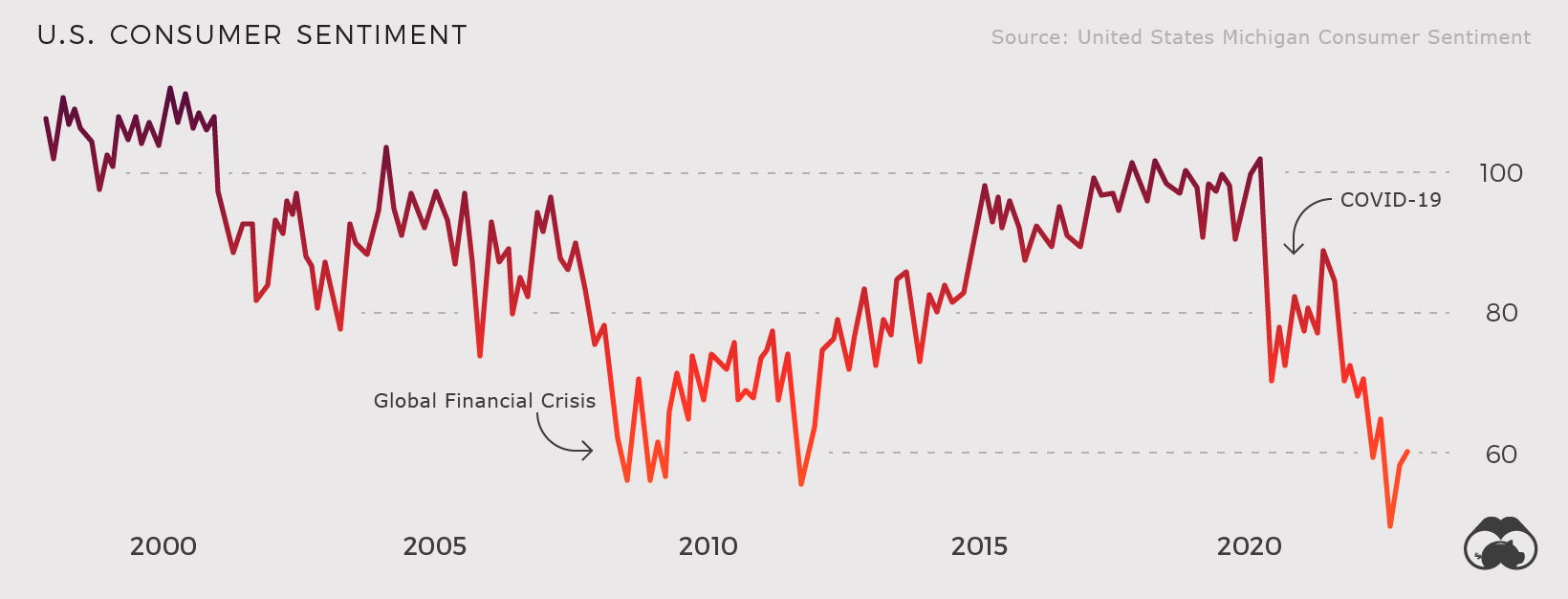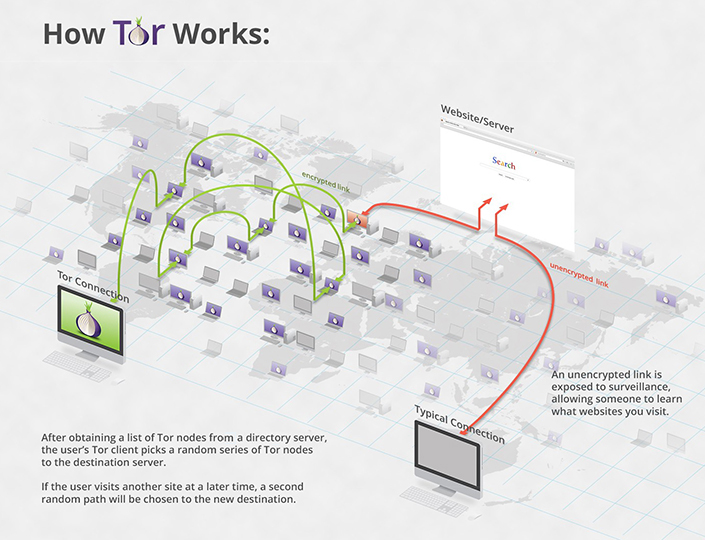Visualized: FTX’s Leaked Balance Sheet
The Shrinking Trillion Dollar Market Cap Club
The Top 100 Most Valuable Brands in 2022
These Global Cities Show the Highest Real Estate Bubble Risk
Comparing the Speed of U.S. Interest Rate Hikes (1988-2022)
Visualizing the World’s Top Social Media and Messaging Apps
Visualized: FTX’s Leaked Balance Sheet
The Shrinking Trillion Dollar Market Cap Club
All of the World’s Spaceports on One Map
Ranked: The World’s Most Surveilled Cities
The U.S. and China Account for Half the World’s Household Wealth
Visualized: The Biggest Donors of the 2022 U.S. Midterm Elections
Comparing the Speed of U.S. Interest Rate Hikes (1988-2022)
Mapped: The 3 Billion People Who Can’t Afford a Healthy Diet
Mapped: The World’s Billionaire Population, by Country
Visualizing the Composition of Blood
Visualizing the Relationship Between Cancer and Lifespan
Explainer: What to Know About Monkeypox
Visualizing How COVID-19 Antiviral Pills and Vaccines Work at the Cellular Level
Mapped: The Most Common Illicit Drugs in the World
The Top 10 EV Battery Manufacturers in 2022
Visualizing the Range of Electric Cars vs. Gas-Powered Cars
What is the Cost of Europe’s Energy Crisis?
All Electric Semi Truck Models in One Graphic
The Inflation Factor: How Rising Food and Energy Prices Impact the Economy
All of the World’s Spaceports on One Map
Map Explainer: The Caucasus Region
Mapped: The 3 Billion People Who Can’t Afford a Healthy Diet
Mapped: Countries With the Highest Flood Risk
Ranked: The 20 Countries With the Fastest Declining Populations
All the Metals We Mined in 2021: Visualized
Visualizing the World’s Largest Iron Ore Producers
Mapped: The 10 Largest Gold Mines in the World, by Production
The 50 Minerals Critical to U.S. Security
Visualizing China’s Dominance in Clean Energy Metals
Visualizing Mismanaged Plastic Waste by Country
Visualizing Changes in CO₂ Emissions Since 1900
Interactive: EV Charging Stations Across the U.S. Mapped
How Big is the U.S. Cheese Stockpile?
Animated Map: Where to Find Water on Mars
Published
on
By
View the high-resolution version of this infographic.
For a time, life in the social media universe was mostly uneventful. Consider these spicy (at the time) headlines:
In hindsight, the years leading up to 2016 were downright sleepy in comparison with what would follow. Donald Trump’s meteoric, tweet-powered rise to the presidency. The Cambridge Analytica scandal. Congressional hearings on privacy and bias. TikTok at the center of souring U.S.–China relations. Each new day brought a fresh wave of controversy the shores of once infallible social media platforms.
Today, the honeymoon phase is long over and the messiness of running a global social platform is now on full display. Nowhere is this more evident than Twitter during the current Elon Musk transitional period—but more details on that later.
For now, let’s explore the social media universe in 2022.
In 2022, the social universe is looking more crowded than in previous years.
The scale of Meta’s platforms still dominate thanks to their global reach, but there are a number of smaller networks fighting for market share. Here’s a look at popular platforms, organized from largest to smallest active userbase:
Meanwhile, here are the top 10 social media and messaging platforms by publicly-available monthly active users:
YouTube is the only true competition for Meta’s scale and reach. Alphabet’s video content hub with social features boasts more than two billion monthly active users. YouTube’s embrace of the creator economy is nudging the platform further into pure social media territory with the introduction of “handles”.
As seen in the visualization above, China has its own ecosystem of large social and messaging platforms—the largest of these being WeChat.
The only platform in the top 20 that is not based in either the U.S. or China is the privacy-focused messaging app, Telegram. The Dubai-based company has a unique backstory. It was created after the founders of Russian social network VK left the country after resisting government pressure to release data on the social network’s users in Ukraine.
Today, there are also a number of smaller, special interest platforms. OnlyFans, for example, is focused on adult content creators. Parler and Truth Social appeal to users who want fewer constraints on the content they post and consume. BeReal aims to create more authentic moments by prompting users to post a photo at a random time each day.
Below, we dig into a few of these platforms into more depth.
Having a figurehead CEO is a double-edged sword. When things are going well, the market rallies around the successful leader. Case in point, Mark Zuckerberg was named Time’s Person of the Year in 2010. Even as recently as 2016, Glassdoor named the Facebook founder the “most admired tech CEO”.
On the flip side, when the tide turns, it turns fast. After a series of controversies, Zuckerberg took a multi-billion-dollar gamble by renaming his entire company Meta and pivoting its focus to the burgeoning idea of a metaverse. Meta’s New Horizons platform is rumored to have plateaued at about 200,000 active users, which is underwhelming for a company that still reaches a sizable slice of humanity with its other services.
Part of Meta’s near-term success hinges on VR headsets being a hot gift this holiday season. Meta’s cheapest headset is $400, which could be a tough sell in today’s economic environment.
Of course, it’s too early to know whether Zuckerberg’s gamble will pay off. As always, all is forgiven once a business unit takes off and becomes profitable.
Twitter has a complicated history.
The company was launched in the shadow of Facebook’s massive growth, and was saddled with expectations that were tough to meet. Although Twitter has an engaged and influential audience, it hasn’t managed to monetize them at the level of Meta’s platforms (for better or worse). The introduction of Twitter Blue in 2021 did not resonate with users at the scale the company hoped, and “fleets” were essentially written off as a failed experiment.
In addition, Twitter is a magnet for criticism and debate around free speech, in part because of its central place in political discourse.
These issues are directly related to the company’s recent sale to Elon Musk. At the time of this article, Twitter finds itself in the midst of a painful, and very public, internal restructuring.
If reports of an exodus of talent and advertising dollars are to be believed, then the future of one of world’s most influential social media platforms could be at risk.
Social media has always been dominated by Facebook and its related apps. When a new challenger came along, Facebook either acquired it (Instagram, WhatsApp), or “acquired” their features (Snapchat). TikTok is the first challenger to keep its momentum and growth, even as Instagram rolled out very similar features.
TikTok is also a rare case of a Chinese tech product crossing over into Western markets. The ascendancy of TikTok was not without controversy though. Suspicion over Chinese access to user data continues to be an issue both in the U.S., and in other large markets around the world. TikTok has been banned in India since 2020.
Despite these headwinds, TikTok remains wildly popular. The short-form video platform was the number one downloaded app on the planet, and it remains a favorite of the all-important Gen Z demographic.
In recent years, neighborhood-based social networks have sprung up and gained traction. NextDoor used physical letters sent to adjacent addresses to supercharge its growth, while Neighbors piggybacked off the popularity of Ring’s doorbell cameras. Although members post about more benign topics such as lost cats and where to find a good plumber, crime is an increasingly common theme as well.
Apps like Neighbors and Citizen have a more overt focus on crime and safety. While the growth of these apps reflects an obvious interest preventing crime, critics point out that the ubiquity of personal surveillance equipment and forums built purely around public safety promote a culture of suspicion in communities.
This type of social network is still quite new, so it remains to be seen if they remain niche communities, or grow into something bigger.
It was Sun Tzu who famously said, “In the midst of chaos, there is also opportunity”.
This is the risk and opportunity in the social media universe today. With their massive networks and high switching costs (e.g. personalization, library of existing posts), the largest platforms have created moats that make life hard for upstart brands looking to replace established platforms. On the other hand, controversy on platforms like Twitter and Facebook may cause some users to consider new options.
The multi-billion-dollar question—is dissatisfaction with major platforms temporary, or will emerging networks like Mastodon or BeReal hit critical mass and become new staples for people connecting online. Time will tell.
The Shrinking Trillion Dollar Market Cap Club
The Shrinking Trillion Dollar Market Cap Club
The Top 100 Most Valuable Brands in 2022
20 Years of Top Trending Google Searches
The Biggest Tech Talent Hubs in the U.S. and Canada
Mapped: The World’s Billionaire Population, by Country
Infographic Timeline: 10 Years of Tinder
As Sam Bankman-Fried’s crypto exchange FTX files for bankruptcy, this graphic visualizes FTX’s balance sheet leaked by the Financial Times.
Published
on
By
In a difficult year for the crypto space that has been full of hacks, failing funds, and decentralized stablecoins going to zero, nothing has compared to FTX and Sam Bankman-Fried’s (SBF) rapid implosion.
After an astronomical rise in the crypto space over the past three years, crypto exchange FTX and its founder and CEO SBF have come crashing back down to earth, largely unraveled by their misuse of customer funds and illicit relationship with trading firm Alameda Research.
This graphic visualizes FTX’s leaked balance sheet dated to November 10th, and published by the Financial Times on November 12th. The spreadsheet shows nearly $9 billion in liabilities and not nearly enough illiquid cryptocurrency assets to cover the hole.
How did FTX wind up in this position?
FTX’s eventual bankruptcy was sparked by a report on November 2nd by CoinDesk citing Alameda Research’s balance sheet. The article reported Alameda’s assets to be $14.6 billion, including $3.66 billion worth of unlocked FTT and $2.16 billion of FTT collateral.
With more than one-third of Alameda’s assets tied up in FTX’s exchange token FTT (including loans backed by the token), eyebrows were raised among the crypto community.
Four days later on November 6th, Alameda Research’s CEO, Caroline Ellison, and Sam Bankman-Fried addressed the CoinDesk story as unfounded rumors. However, on the same day, Binance CEO Changpeng Zhao (CZ) announced that Binance had decided to liquidate all remaining FTT on their books, kicking off a -7.6% decline in the FTT token on the day.
While Ellison publicly offered to buy CZ’s FTT directly “over the counter” to avoid further price declines and SBF claimed in a now-deleted tweet that “FTX is fine. Assets are fine.”, FTX users were withdrawing their funds from the exchange.
Less than 24 hours later on November 7th, both SBF and CZ tweeted that Binance had signed a non-binding letter of intent for the acquisition of FTX, pending due diligence.
The next day, the acquisition fell apart as Binance cited corporate due diligence, leaving SBF to face a multi-directional liquidity crunch of users withdrawing funds and rapidly declining token prices that made up large amounts of FTX and Alameda’s assets and collateral for loans.
In the final days before declaring bankruptcy, FTX CEO Sam Bankman-Fried attempted a final fundraising in order restore stability while billions in user funds were being withdrawn from his exchange.
The balance sheet he sent around to prospective investors was leaked by the Financial Times, and reveals the exchange had nearly $9 billion in liabilities while only having just over $1 billion in liquid assets. Alongside the liquid assets were $5.4 billion in assets labeled as “less liquid” and $3.2 billion labeled as “illiquid”.
When examining the assets listed, FTX’s accounting appears to be poorly done at best, and fraudulently deceptive at worst.
Of those “less liquid” assets, many of the largest sums were in assets like FTX’s own exchange token and cryptocurrencies of the Solana ecosystem, which were heavily supported by FTX and Sam Bankman-Fried. On top of this, for many of these coins the liquidity simply wouldn’t have been there if FTX had attempted to redeem these cryptocurrencies for U.S. dollars or stablecoin equivalents.
While the liquid and less liquid assets on the balance sheet amounted to $6.3 billion (still not enough to equal the $8.9 billion in liabilities), many of these “less liquid” assets may as well have been completely illiquid.
When looking at FTX’s financials in isolation, it’s impossible to understand how one of crypto’s largest exchanges ended up with such a lopsided and illiquid balance sheet. Many of the still unfolding details lie in the exchange’s relationship with SBF’s previous venture that he founded, trading firm Alameda Research.
Founded by SBF in 2017, Alameda Research primarily operated as a delta-neutral (a term that describes trading strategies like market making and arbitrage that attempt to avoid taking directional risk) trading firm. In the summer of 2021, SBF stepped down from Alameda Research to focus on FTX, however his influence and connection with the firm was still deeply ingrained.
A report from the Wall Street Journal cites how Alameda was able to amass crypto tokens ahead of their announced public FTX listings, which were often catalysts in price surges. Alongside this, a Reuters story has revealed how SBF secretly moved $10 billion in funds to Alameda, using a bookkeeping “back door” to avoid internal scrutiny at FTX.
While SBF responded to the Reuters story by saying they “had confusing internal labeling and misread it,” there are few doubts that this murky relationship between Alameda Research and FTX was a fatal one for the former billionaire’s empire.
This chart looks at some of the common items that are sold on the Dark Web, and how much they sold for on average in 2022.
Published
on
By
Did you know that the internet you’re familiar with is only 10% of the total data that makes up the World Wide Web?
The rest of the web is hidden from plain sight, and requires special access to view. It’s known as the Deep Web, and nestled far down in the depths of it is a dark, sometimes dangerous place, known as the darknet, or Dark Web.
This graphic by Enrique Mendoza provides us a glimpse at this shrouded part of the internet, showing us some of the common items that are sold on there, and how much they typically cost.
Before diving in, it’s worth quickly explaining what the Dark Web is, and how people typically gain access to it.
Unlike the ordinary web (which is also known as the Surface Web), the Dark Web cannot be accessed through a regular browser such as Chrome or Safari. Rather, users need to access it anonymously via a Tor browser.
Tor, which is short for “The Onion Router,” is a special portal that connects users to Dark Web websites in a complicated way that ultimately protects the user’s identity. This means users can access websites anonymously. 
The Dark Web can be a breeding ground for illegal activity, where people can buy things like contract killings, drugs, malware, and other people’s personal information.
How much is your personal information worth on the Dark Web? This graphic uses data from the 2022 Dark Web Product Price Index to find that out and more.
This annual report by privacyaffairs.com provides insights into some of the most popular products that are for sale on the Dark Web, such as credit card data, forged documents, and hacked info, and lists the average price of each product.
While this list is far from exhaustive and not the only measure of Dark Web prices, the report gives us a glimpse into hidden online territory that’s extremely unfamiliar to many of us.
One of the most expensive items included in the dataset is premium malware, which costs about $5,500 per 1,000 installs. While the cost for premium malware is hefty, there are still billions of malware attacks occurring every year causing huge monetary damage.
On the other end of the spectrum are Paypal account details, Netflix logins, or stolen credit card details (complete with a CVV) all available for less than $20.
As the line between the digital and physical realm becomes increasingly blurry, it’s more important than ever to make sure you’re protecting yourself and your personal information from identity theft.
According to Privacy Affairs, there are several proactive measures you can take to decrease your chances of getting hacked. This includes using a VPN whenever you access public Wi-Fi, using different passwords for different online accounts, and investing in anti-malware software to combat unwanted visitors.
The Top 100 Most Valuable Brands in 2022
Ranked: Gen Z’s Favorite Brands, Compared with Older Generations
All the Metals We Mined in 2021: Visualized
Visualized: Who Americans Spend Their Time With
The Shrinking Trillion Dollar Market Cap Club
Visualized: The Biggest Donors of the 2022 U.S. Midterm Elections
Visualizing the Evolution of Vision and the Eye
Visualized: FTX’s Leaked Balance Sheet
Copyright © 2022 Visual Capitalist


